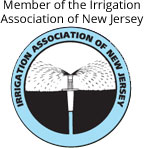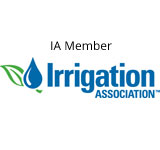If you know how to take care of it, your lawn and garden can give you years of enjoyment for surprisingly little effort.
When it comes to watering your yard, you may be able to save yourself some “green” without your lawn turning brown — by using an automatic irrigation system. If that system is correctly designed, installed and maintained, it can keep your landscape looking lush on the least amount of water.
Proper watering is a simple step, but it is one of the most important things you can do to keep your lawn healthy—and experts say a healthy lawn can raise your home’s value by as much as 14 percent.
Divide By Zones: Different plants need different amounts of water. Divide your yard into separate irrigation zones so the grass can be watered separately and more frequently than groundcovers, shrubs and trees.
Keep It Balanced: Put measuring cups in various places around your lawn and run the sprinklers for 15 minutes. This will give you an idea of how much water the grass is getting and where. You’re looking for about one to two inches—depending on the soil—evenly distributed. An underground sprinkler system is probably the best way to be sure the lawn is evenly covered.
Waste Not, Want Not: The greatest waste of water comes from applying too much, too often—much of it runs off and is never absorbed. Instead of watering for one long continuous session, try splitting the watering time into shorter periods and take 15-minute breaks in between each session. This will let the water soak in, while minimizing runoff.
Watch The Clock: Water between 5 a.m. and 10 a.m.—when the sun is low, winds are calm and temperatures are cool. Midday watering tends to be less efficient because of water loss due to evaporation and windy conditions during the day. Watering in the evening isn’t a good idea either because leaves can remain wet overnight—an open invitation for fungus to grow. By watering in the morning, you give the leaves a chance to dry out during the day.





